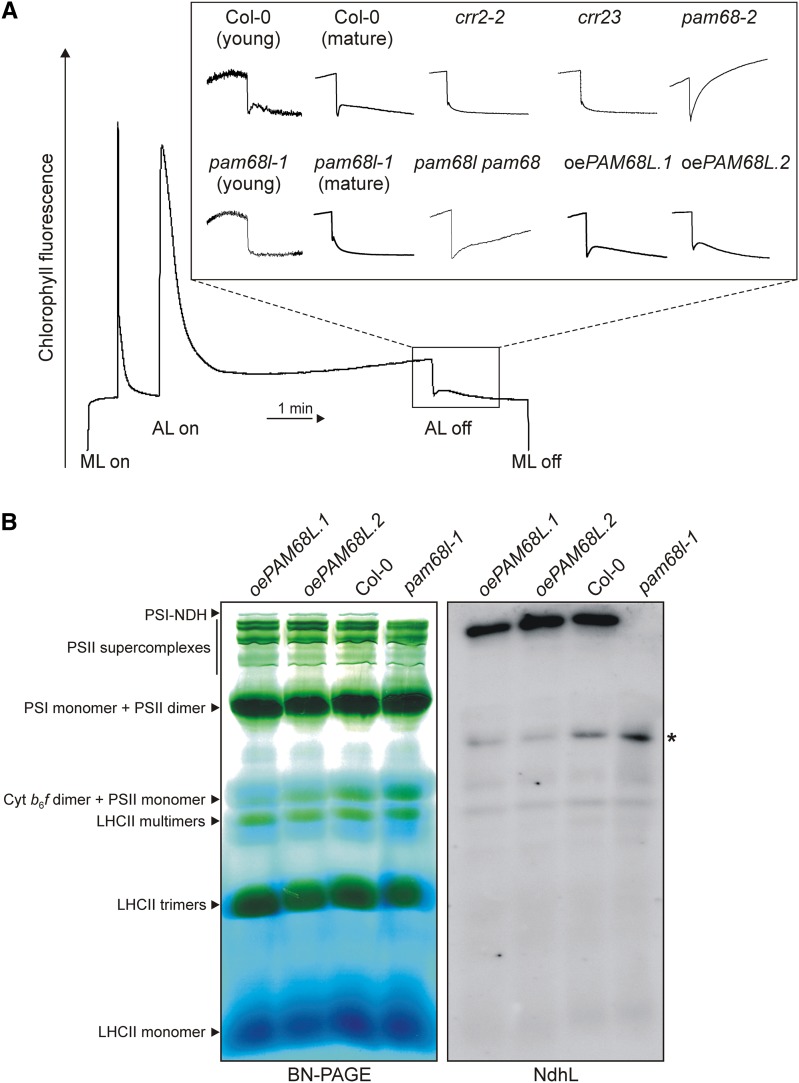Figure 2.
PAM68L Is Required for NDH Activity and PSI-NDH Supercomplex Accumulation.
(A) NDH activity of 4-week-old wild-type (Col-0), pam68l-1, and two independent 35S:PAM68L pam68l-1 (oePAM68L) lines, as well as crr2-2, crr23 (ndhl), pam68-2, and pam68l-1 pam68-2 as controls, was determined by chlorophyll fluorescence analysis during a light-to-dark transition. For the wild type (Col-0) and pam68l-1, NDH activity was measured with 2-week-old leaves (young) and 4-week-old leaves (mature). Leaves were exposed to a saturating light flash to obtain maximum fluorescence (Fm) and then to low actinic light (AL) for 5 min. AL was then turned off and the subsequent transient rise in fluorescence ascribed to NDH activity was monitored using a pulse amplitude modulation chlorophyll fluorometer. The main panel shows the typical course of wild-type chlorophyll fluorescence under these conditions. Insets are magnified traces from the boxed area normalized to Fm. ML, measuring light.
(B) Thylakoid membranes from wild-type (Col-0) and pam68l-1 plants and two independent oePAM68L lines were solubilized in 1% (w/v) β-DM at a chlorophyll concentration of 1 µg μL−1, and the samples were fractionated by 5 to 12% BN-PAGE according to Peng et al. (2008). The major protein complexes were assigned to individual bands as described (Peng et al., 2008; Armbruster et al., 2010). Denatured protein complexes were then transferred to PVDF membrane and probed with antibodies raised against the NdhL subunit. The asterisk indicates the position of an NdhL-containing assembly intermediate that is particularly prominent in the pam68l-1 sample.

